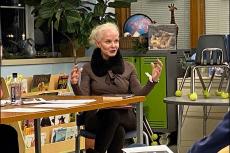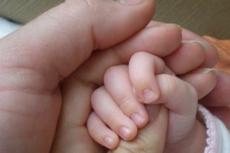The 4.8-magnitude earthquake centered in New Jersey on Friday and felt to a lesser degree here on the South Fork, was one of the bigger ones experienced in the region in recent decades.
“In actuality this is, on a relative basis, a big deal, but yet 4.8 is not big by global standards,” William Holt, a professor of geophysics at Stony Brook University, said on Friday, a few hours after the shaking stopped. “We’ve had smaller ones, three or four over the last 30 years, in the Long Island area.”
The quake, according to the United States Geological Survey, was centered at Whitehouse Station, N.J., at a depth of 4.7 kilometers. It registered 2.8 on the Richter scale at a seismic monitoring station at Napeague, according to the U.S.G.S. There were aftershocks centered at the same vicinity on Friday at 2:29 p.m. (2.6 magnitude) and 9:59 p.m. (3.8 magnitude), and on Saturday at 10:46 a.m. (2.5).
Earthquakes are caused by fault lines in the moving tectonic plates that make up our planet’s crust. New York and Long Island in particular are not located along a specific fault line — California, Washington, Oregon, Alaska, Hawaii, and Nevada are states where these are common.
“There are very few identified faults on the East Coast that we know of that have repeating paths of earthquakes,” Mr. Holt said. However, he noted, “the North American plate is under internal stress.”
“We are in the middle of a tectonic plate that is under stress,” he added, “so every now and then, something fractures and breaks.”
The good news is that “while it’s not a zero probability to have a bigger earthquake than what we had, you can take heart in that you can count on one hand earthquakes of this range,” Mr. Holt said. “They’re notable because they are widely felt, but thank goodness they are not enough to cause significant damage.”
And these smaller quakes are scientifically valuable. “We learn more about the orientation of the stress field that produced this break. It’s a teaching moment and a learning moment,” he said. “We learn more about the Earth.”
Just two days before the Friday quake here, a magnitude 7.4 earthquake struck on the other side of the globe in Taiwan, killing 13 people, wounding more than a thousand, and causing concern over tsunamis around Japan, CNN reported. Earthquakes like that happen maybe 10 times a year around the world, according to Mr. Holt. At magnitude 6 or higher, there are about 250 each year; at 5, about 1,300 a year.
And quakes of 4 or higher, the magnitude felt in the New York metropolitan area last week, come at a frequency of about 13,000 a year globally, Mr. Holt said.
“There are many, many small earthquakes, and as you go up in magnitude they become more and more infrequent,” he said. “It’s a good thing, because every point you go up, in magnitude, you go up 33 times in energy. That’s why this one was felt in northern Vermont and Virginia. That’s why everyone is talking about it.”
A similar earthquake on the West Coast, Mr. Holt said, would have been felt in a more concentrated area. “Seismic energy propagates very efficiently through the crust of the East Coast, in comparison to the West Coast, where earthquakes are much more frequent. Sometimes they say a quake on the East Coast will be felt with a shaking intensity over a surface area that is 10 times the size of the surface area where it’s felt on the West Coast.”
With Reporting by Carissa Katz and Bess Rattray



